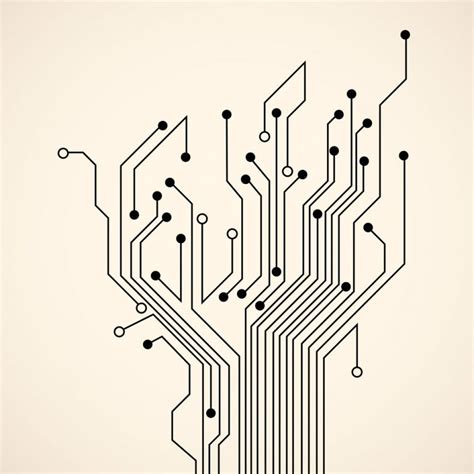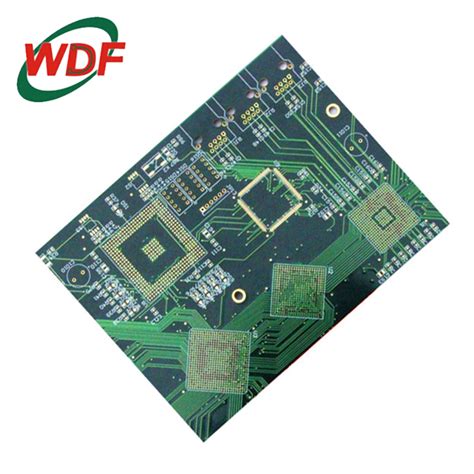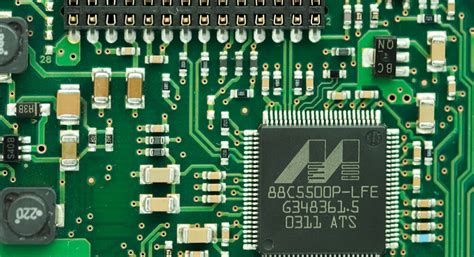Mastering Circuit Card Assembly Design: A Comprehensive Guide
Key Takeaways
Understanding the essential aspects of pcb assembly is crucial for achieving high-quality results in circuit card projects. This guide emphasizes the importance of selecting appropriate key components and materials that play a pivotal role in the overall performance of the pcba. Effective design processes are not just about layout; they involve a thorough understanding of electrical and mechanical factors that influence functionality and durability. Incorporating best practices can significantly enhance circuit card assembly performance, ultimately leading to successful outcomes. Additionally, being prepared to troubleshoot common issues—ranging from solder joint failures to signal integrity problems—can save time and resources during the production phase. As technology continues to evolve, staying informed about future trends in circuit card assembly design will be vital for engineers and designers aiming to maintain competitive advantages in this dynamic field.
Introduction to Circuit Card Assembly Design
Circuit card assembly design plays a pivotal role in the development of electronic devices, encompassing the entire process from pcb assembly to final integration. At the core of this process is the understanding of critical components and their functionalities. The design phase involves meticulous planning and effective techniques to ensure that the pcba meets the required specifications for performance and reliability. Designers must consider factors such as layout, materials, and manufacturing processes to produce efficient circuit card assemblies. Utilizing high-quality materials not only enhances durability but also improves signal integrity, which is essential for today’s advanced electronics.
Additionally, troubleshooting early in the design phase can significantly reduce costs and timeline delays associated with later modifications. As a tip, “It’s essential to document every step of your design process; this will streamline troubleshooting later on.” By maintaining thorough records, designers can easily identify issues and implement solutions swiftly.
The following table outlines some key components commonly found in circuit assemblies along with their respective functions:
| Component | Function |
|---|---|
| Resistors | Control current flow |
| Capacitors | Store and release electrical energy |
| Inductors | Oppose changes in current |
| Integrated Circuits | Combine multiple functions on a single chip |
In conclusion, mastering circuit card assembly design requires a balanced approach that blends innovation with proven best practices, ensuring that projects not only meet technical requirements but also excel in performance. By fostering an intricate understanding of both fundamental concepts and emerging trends within the field, one can navigate this complex landscape effectively.
Key Components and Materials in Circuit Card Assembly
In the realm of circuit card assembly design or pcba, understanding the critical components and materials used is fundamental to achieving successful results. The backbone of any pcb assembly lies in its components, which include resistors, capacitors, integrated circuits (ICs), and connectors. Each component plays a specific role, contributing to the overall functionality and reliability of the final product. When selecting materials for pcba, it’s crucial to consider the electrical requirements, thermal properties, and structural integrity. For instance, a commonly used substrate is FR4, a glass-reinforced epoxy laminate that provides excellent mechanical strength and is suitable for most electronic applications. Additionally, soldering materials such as lead-free solder must be chosen carefully to ensure compatibility with environmental standards while also providing robust connections between components. Furthermore, the choice of surface finish can significantly affect the assembly process and long-term performance; options like ENIG (Electroless Nickel Immersion Gold) or HASL (Hot Air Solder Leveling) are often considered for their unique benefits in terms of solderability and durability. By prioritizing these key components and materials, designers can streamline their circuit card assembly projects and enhance overall product quality.
Essential Techniques for Effective Design Processes
When embarking on a pcb assembly project, understanding the essential techniques for effective design processes is crucial to achieving optimal results in your circuit card assembly endeavors. One of the primary focuses should be on the meticulous layout of components. Proper placement not only ensures optimal space utilization but also plays a vital role in minimizing signal interference and maintaining signal integrity. Utilizing advanced software tools for simulation and design validation can help identify potential issues early in the design phase, allowing for timely corrections.
Moreover, selecting suitable materials is critical. High-quality substrates and solder masks can significantly influence the durability and performance of the finished pcba. It’s also important to adhere to industry standards when choosing components, as this will facilitate easier sourcing and enhance compatibility across different systems.
In addition, implementing effective routing techniques, such as controlled impedance and differential pairs, can vastly improve signal transmission within your board. Proper thermal management should not be overlooked either; ensuring adequate heat dissipation will prolong the life of your components.
Finally, thorough documentation during the design process helps streamline later stages of production and troubleshooting. By focusing on these essential techniques, designers can enhance their capabilities and lead their circuit card assembly projects to success effectively.
Troubleshooting Common Issues in Circuit Card Assembly
In pcb assembly, various challenges can arise that may hinder the efficiency and effectiveness of the process. Identifying and resolving these issues is crucial for ensuring high-quality pcba results. One common issue is misalignment during the assembly process, which can lead to soldering defects. This misalignment often occurs due to inaccurate placement of components or tooling errors. To mitigate this, it’s vital to evaluate the alignment tools and techniques used during the assembly phase. Additionally, poor solder joint quality can result from inadequate heat application or contamination on surfaces. Implementing proper cleaning methods before the soldering process can greatly enhance joint integrity.
Another frequent problem encountered is component failure, which may stem from thermal stress or incorrect voltage levels during operation. Utilizing robust design practices that factor in thermal management and electrical considerations will reduce these occurrences significantly. It’s also beneficial to conduct thorough testing at various stages to catch these failures early on.
Finally, issues with circuit continuity can arise when traces are damaged or improperly routed. Regularly reviewing design files for errors before finalizing production will help in minimizing these risks. By understanding these common challenges and proactively addressing them, professionals can elevate their circuit card assembly projects’ performance and reliability effectively.
Best Practices for Enhancing Circuit Card Performance
When working with pcb assembly, it is essential to implement best practices that can significantly enhance the performance of your pcba projects. One of the foremost strategies is to select high-quality materials that can withstand operational stresses and environmental conditions. Proper material selection not only influences the durability of the circuit but also affects electrical performance and signal integrity. Additionally, optimizing layout design is crucial; it should minimize the length of traces and maintain proper spacing between components to reduce interference and signal degradation.
Another key practice involves thorough testing processes throughout the design phase rather than only at the end. In-circuit testing (ICT) and functional testing can help identify issues early, ensuring a more reliable final product. Furthermore, keeping abreast of emerging technologies can allow designers to incorporate advanced components, such as high-speed digital interfaces or energy-efficient ICs, which contribute to overall performance enhancement.
Adopting a systematic approach towards design reviews fosters collaboration among team members and generates insights that could lead to improved circuit design decisions. Ensuring adherence to best practices in pcb assembly will not only enhance circuit performance but also lead to increased reliability and reduced time-to-market for your pcba projects.
Future Trends in Circuit Card Assembly Design
The landscape of pcb assembly is continuously evolving, driven by advancements in technology and changing market demands. One of the key trends shaping the future of pcba is the increasing adoption of automation and robotics in the assembly process. This not only enhances efficiency but also minimizes human error, leading to higher quality products. Furthermore, the rise of smart technology and IoT (Internet of Things) devices necessitates more compact and sophisticated circuit card designs, which emphasize the need for innovative design techniques that can accommodate smaller components without compromising performance.
Another significant trend is the focus on sustainable practices within circuit card assembly. Manufacturers are exploring eco-friendly materials and processes to reduce waste and environmental impact associated with pcb assembly. This shift towards sustainability aligns with global efforts to promote more responsible manufacturing practices.
Moreover, advancements in software tools for design automation are making it easier for engineers to create intricate layouts efficiently. These tools often incorporate artificial intelligence capabilities that assist in optimizing circuit layouts for better performance and reduced fabrication costs.
As these trends continue to develop, professionals involved in circuit card assembly design need to stay informed about new technologies and methodologies that can enhance their projects, ensuring they remain competitive in a fast-paced market. The integration of these innovations will undoubtedly redefine how future pcba projects are conceptualized and executed, paving the way for even more advanced applications across various sectors.
Case Studies: Success Stories in Circuit Card Projects
Exploring successful pcb assembly projects provides invaluable lessons that can inform future designs and processes. One standout example is a project undertaken by a prominent electronics manufacturer who aimed to optimize their pcba for industrial automation applications. By employing advanced design techniques, they enhanced the density of components while ensuring reliability under extreme conditions. The use of high-quality materials for both conductive paths and soldering processes resulted in a significant reduction of failures during the product’s lifecycle. Additionally, innovative design approaches not only increased performance but also allowed for a more streamlined circuit card assembly process, cutting assembly time by 20%. Another noteworthy case involved a startup focused on consumer electronics that leveraged modular design principles in their pcb assembly. This flexibility allowed for swift iterations and improvements based on user feedback, ultimately leading to a product line that resonated well with its audience. These success stories underscore the importance of adopting best practices and remaining adaptable in circuit card assembly design, ultimately paving the way for enhanced performance and customer satisfaction in pcba projects.
Conclusion
In summary, mastering circuit card assembly design (often referred to as pcb assembly) requires a thorough understanding of various vital elements. Throughout this guide, we’ve delved into the relationship between components and materials that drive the effectiveness of pcba processes. By applying essential techniques discussed earlier, designers can elevate their projects, ensuring reliability and performance. Furthermore, troubleshooting common issues is a crucial aspect that prevents setbacks in the assembly process, allowing for smoother workflows. Adopting best practices can significantly enhance circuit card performance and longevity, meeting modern demands for efficiency and innovation. As technology advances, staying attuned to future trends in circuit card assembly design will be essential for industry professionals aiming to remain competitive. In conclusion, the ongoing pursuit of knowledge in pcb assembly not only fosters successful projects but also contributes to broader advancements in electronics manufacturing.
FAQs
What is PCB assembly?
PCB assembly, often referred to as PCBA, is the process of soldering electronic components onto a printed circuit board (PCB) to create a fully functional electronic circuit.
What are the key components involved in circuit card assembly design?
Key components in circuit card assembly design typically include the substrate, traces, vias, components like resistors and capacitors, and various types of mounting hardware. The choice of materials and manufacturing techniques greatly influences the performance of the assembled PCB.
How can I troubleshoot common issues in PCB assembly?
Common issues in PCB assembly include misalignment, poor solder joints, and component failures. Effective troubleshooting begins with a thorough inspection of the assembled board using techniques such as visual inspection, X-ray analysis, and electrical testing to identify faults before final deployment.
What best practices should I follow for enhancing circuit card performance?
To enhance performance, use quality components, ensure proper thermal management, and implement robust design rules that minimize signal interference. Additionally, adopting surface mount technology (SMT) can improve overall density and functionality on your circuit cards.
What future trends should I be aware of in circuit card assembly design?
Emerging trends in PCB design include increased use of automation, adoption of flexible circuits, and a shift towards environmentally friendly materials. Staying updated on these trends can help designers innovate effectively while also maintaining compliance with industry standards.
For more insights into PCB assembly processes and techniques, please click here: Andwin PCB Assembly







